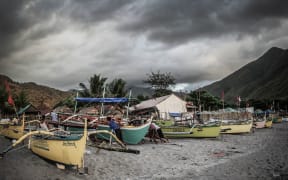A powerful typhoon ploughed through the central Philippines on Sunday, bringing howling winds that toppled trees and power poles and cut off communications to areas where thousands were killed by a massive storm just over a year ago.
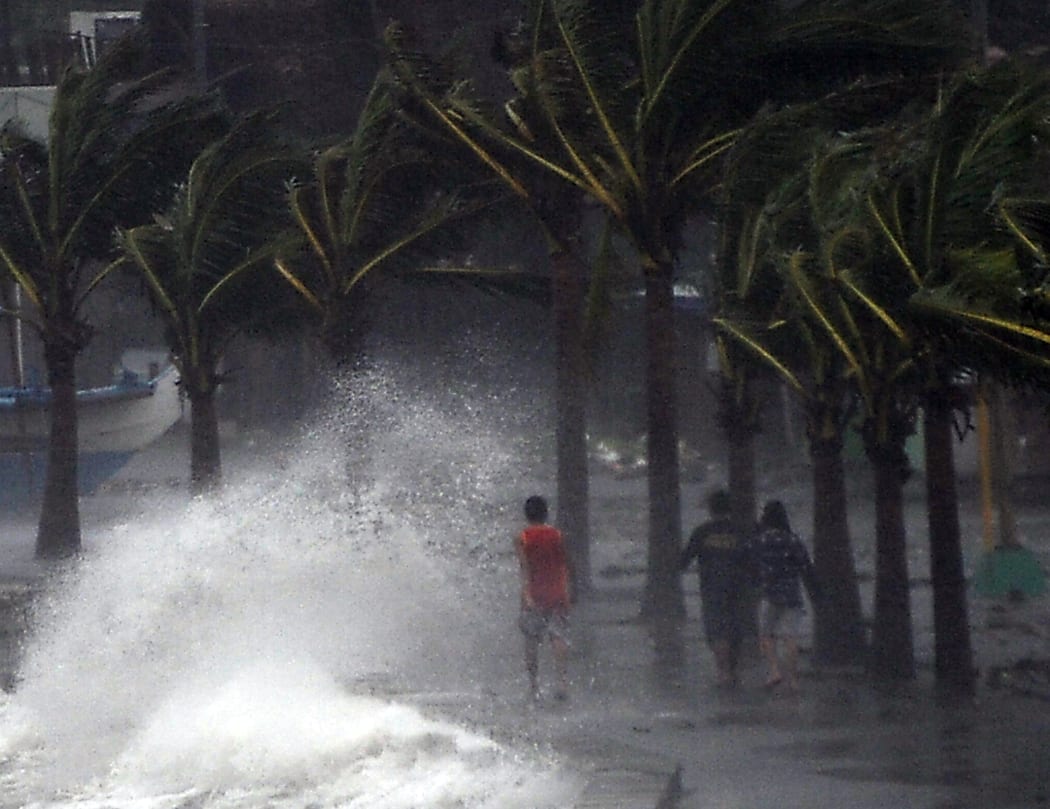
Residents walking past high waves brought about by strong winds pounding the seawall. Photo: AFP
More than one million people fled to shelters away from coastal areas and landslide-prone villages by the time Typhoon Hagupit made landfall on Saturday night, in what a UN agency said was one of the world's biggest peacetime evacuations.
As the storm barrelled in from the Pacific, power was cut across most of the eastern island of Samar and nearby Leyte province, including Tacloban City, considered ground zero of the devastating super typhoon Haiyan last year.
"I can't penetrate the areas, I can't go north or south because of fallen trees and power lines. Many areas are flooded," Ben Evardone, congressman for Eastern Samar, said from his base in the provincial capital Borongan.
Local radio reported at least two people were killed in Eastern Samar, but that could not be confirmed by officials. The Philippine Red Cross said they were also verifying the report.
The ABC reports Hagupit had weakened to a category three storm, two notches below "super typhoon", when it hit land, but still brought torrential rain and the risk of potentially disastrous storm surges of up to 4.5 metres.
"This storm is still very strong, it could bring massive devastation," weather forecaster Alvin Pura said.
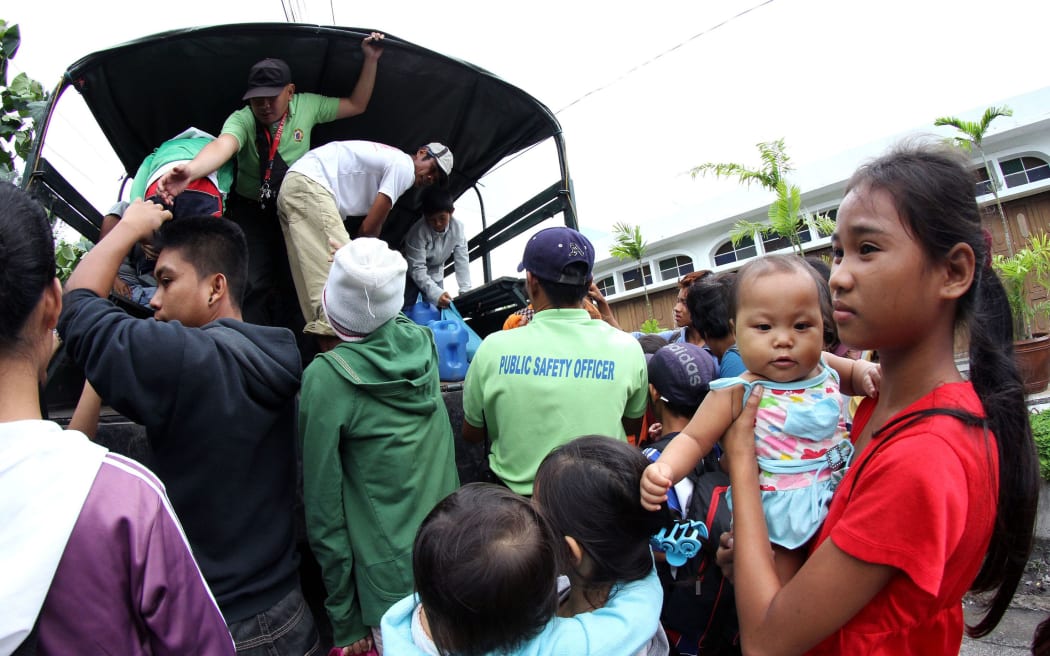
Residents are evacuated to a safer place in Legazpi City, southeast of Manila, ahead of the arrival of Typhoon Hagupit. Photo: AFP
There were more than 1.2 million people crowding over 1,500 evacuation centres across central Philippines, said Gwendolyn Pang, secretary general of the Philippine Red Cross, adding local governments were providing the evacuees' basic needs.
But there were worries about sanitation and the impact on health of the evacuees in cramped spaces especially in urban areas.
Hagupit was moving west northwest at 15kph, bringing winds of up to 160kph near the centre and gusts of up to 195kph.
'We survived last year, we will do it again'
Tacloban, where thousands died during last year's Typhoon Haiyan, was among cities and towns in the path of Hagupit, which was expected to take three days to pass across the country.
Severe flooding was expected, and aid workers were braced to provide emergency help with kits to make drinking water safe.
Thousands of passengers were also left stranded after Philippine Airlines and Cebu Pacific cancelled flights to the central and southern Philippines, and sea travel services were suspended.
Officials said there had been damage in the town of Dolores, where the storm made landfall, the BBC reported.
As dusk fell over Tacloban Bay, powerful winds had started tearing the tin roofs off houses and waves were crashing into the wooden shacks that crowd the shorelines.
Many people in Tacloban, a city of 220,000 people, had taken shelter in the sports stadium.
"It's deja vu, but not the same as last year with Haiyan," local resident Mariano Tan Jr told the BBC.
"We're already prepared... we've stored basic commodities - water, rice, beans, fuel. We're also prepared in case of a power cut.
"We intend to stay," he added. "We survived last year, we will do it again tomorrow. We will still stand our ground because no calamities can break us apart."
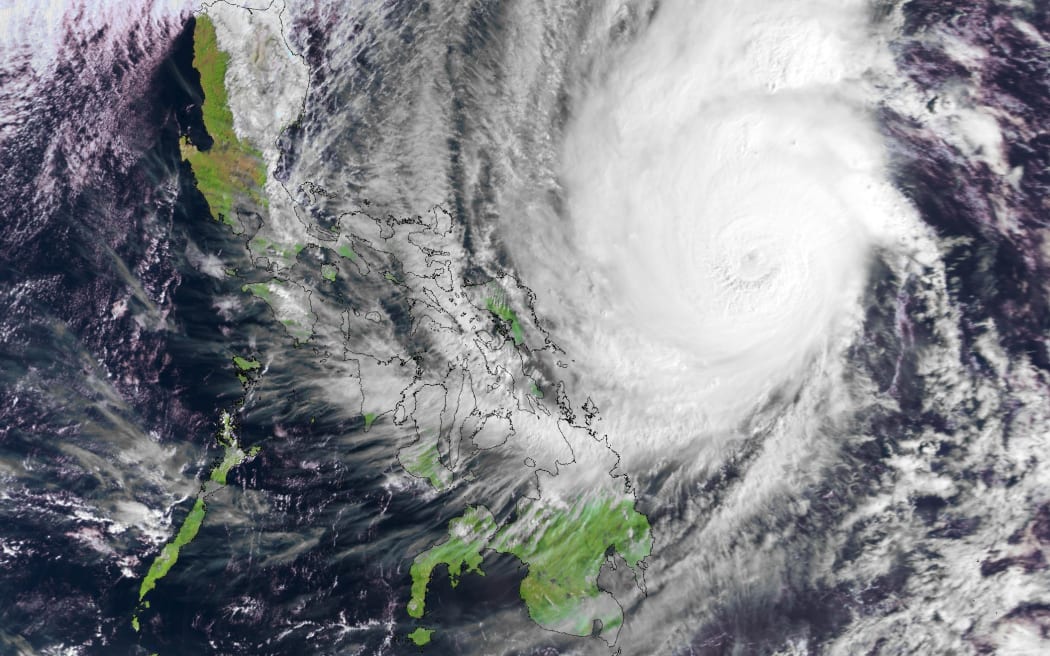
A satellite image of Typhoon Hagupit in the Western Pacific Ocean, taken about a day before the typhoon made landfall. Photo: AFP / 2014 EUMETSAT
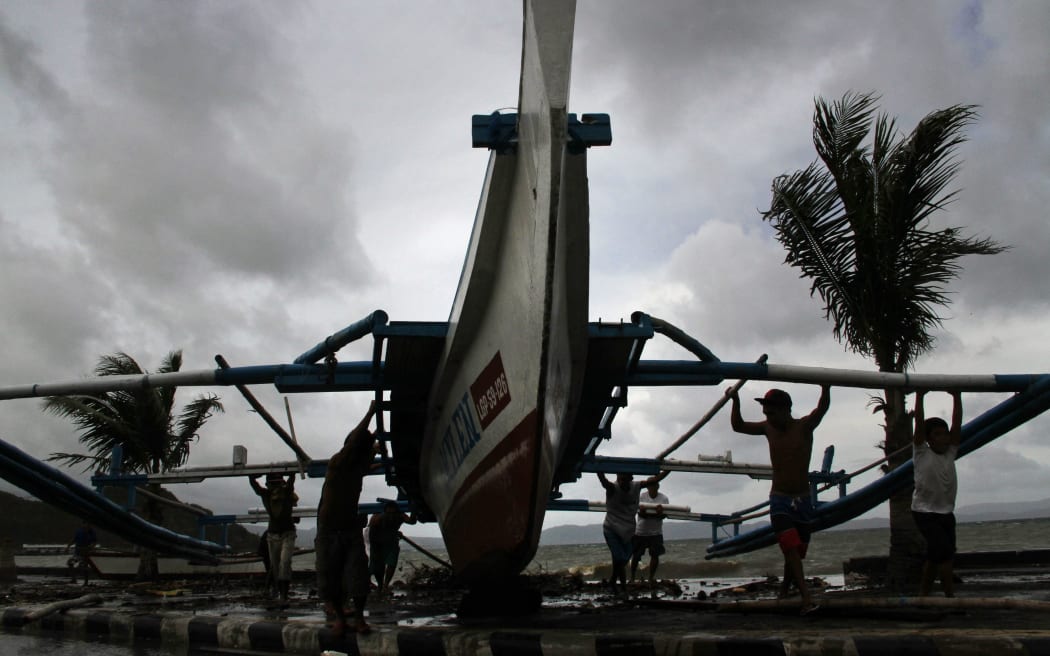
Fishermen carry an outrigger to higher ground in Legazpi City, south of Manila, ahead of the landfall of Typhoon Hagupit. Photo: AFP
President Benigno Aquino has ordered food supplies to be sent to affected areas, as well as military troops and police officers to be deployed to prevent looting in the aftermath.
Local media earlier reported Mr Aquino as saying there was "no indication" for now that Hagupit would be as strong as Haiyan.
Haiyan - known as Yolanda in the Philippines - was the most powerful typhoon ever recorded over land. It left more than 7000 people dead or missing and more than four million homeless.
While Hagupit has been downgraded to category four, which is a level below "super typhoon", it remains the strongest storm to hit the Philippines in 2014.
Aid agency holds 'grave concerns'
The children's aid agency, Save the Children, says it holds grave concerns for people caught in the path of Typhoon Hagupit as the powerful storm is likely to cause heavy flooding.
Save the Children spokesperson Tom Howells who is based in the storm-hit area said the typhoon may be slower than its predecessor but that means it will also last longer and bring more rain.
Mr Howells said storm surges and flooding could completely demolish homes along the coastline and many people living in the typhoon's path were already in makeshift accommodation.
He said the agency helped communities prepare for the storm and also had emergency supplies pre-positioned in areas that were at most threat.
Mr Howells said it was too early to estimate the size of the job that faced aid agencies like theirs.
Too early to assess full damage
Oxfam New Zealand also said it was still too early to assess the full damage being done by Typhoon Hagupit.
Its executive director Rachael Le Mesurier said the area was still recovering from the destruction caused by Super Typhoon Haiyan a year ago.
Ms Le Mesurier said Oxfam had stockpiles of water and hygiene kits, soap, sleeping mats and blankets ready to go.
The Ministry of Foreign Affairs and Trade said there were currently 300 New Zealanders registered in the Philippines but so far it was not aware of any who had been adversely affected by the typhoon.
